Affiliate disclosure: This post may contain affiliate links. Please see our Privacy Policy.
Chaga tincture is a potent healing extract made from a surprisingly common fungus, you might even have some growing in your own backyard! Here’s how to reap all the benefits of chaga using a simple, mostly hands-off double-extraction method.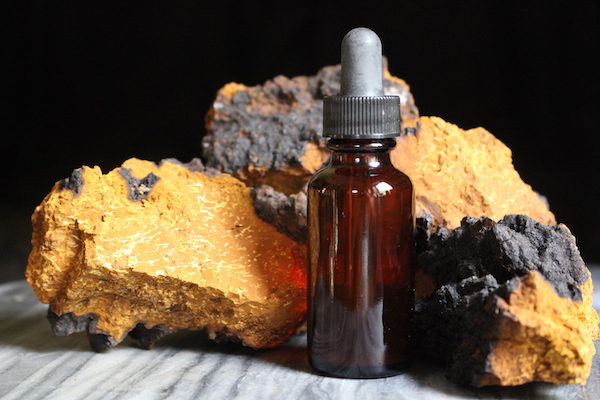
Chaga is a well-known medicinal mushroom, and one of many potent medicinals that grow on birch, alongside Birch Polypore and Tinder Polypore. Since chaga mushrooms are woody in nature, making a medicinal mushroom tincture is one of the very best ways to use them.
What are Chaga Mushrooms?
The chaga mushroom (or Inonotus obliquus if we’re going by its scientific name) is a type of parasitic fungus that grows exclusively on white and yellow birch trees in the Northern Hemisphere. With its dark brown or even black exterior, chaga looks a lot like burnt charcoal or charred wood. In contrast, the interior flesh of the mushroom can range from a beautiful smoldering ochre to a vivid shade of gold (as you can see in the photos, the contrast between the two colors is striking).
Chaga is, in a word, resilient. It can withstand freezing temperatures and repel invasive pathogens — chaga is even resistant to UV radiation. This trait of resiliency is important in terms of the fungus’s adaptogenic properties. In fact, it’s been hypothesized that this resiliency plays an important role in the mushroom’s beneficial effect on humans.
You can check out this post, guest-written by Chef Markus Mueller, for more in-depth information on identifying, harvesting, and using chaga medicinally.
The use of chaga as traditional medicine goes back many (many) thousands of years, as I’ve discovered in my readings. This timeline of chaga is fascinating and goes into great detail exploring the vast history of this ancient fungus. Chaga is intensely bitter and can be hard on the digestive system, so it’s typically taken as a tea or mushroom coffee, as a powder, in capsule form, and, my favorite way, as a tincture.
Benefits of Chaga Tincture
So far, studies that have looked at the medicinal properties of chaga have only looked at in vitro and animal studies, but the research being conducted is promising. As I mentioned above, chaga has a long history of use for its healing properties, as well as plenty of accumulated anecdotal evidence from countries such as Russia, Japan, China, Canada, and most of the United States.
One of the biggest areas of study around chaga mushrooms is the fungus’s potential as a treatment for cancer. Several studies that have used mice or human cell tissue have found evidence that chaga slows down the spread of cancer while also causing the death of cancer cells without destroying healthy cells alongside it. This last part is particularly of interest for medical researchers, as many types of cancer treatment destroy healthy cells in addition to cancer cells.
Chaga has also been studied for its medicinal benefits on the digestive system, specifically looking at how chaga mushroom extract affected human cells taken from the gastrointestinal tracts of those suffering from IBS. The study found that the in vitro cells that had been exposed to chaga extract showed reduced inflammatory markers.
Another area of research around the chaga mushroom has looked at the fungus’s anti-inflammatory response in mice, examining its role and effectiveness as a potential anti-allergenic agent. I hope that as these findings emerge they’ll be a shift towards clinical studies using humans, there’s just so much we still don’t know about this powerful adaptogenic fungus.
Other ongoing studies have looked at:
- The fungus’s ability to help prevent or reduce liver disease.
- The effect chaga has on maintaining a healthy immune system.
- Chaga’s effect on blood sugar, specifically within the context of diabetes.
Safety Precautions to Consider When Taking Chaga Tincture
Chaga is a very rich source of oxalates, a compound that can cause kidney stones if taken in large amounts. It can also potentially lower blood sugar, so it’s important to avoid chaga if you’re someone who is diabetic and already taking medication that lowers blood sugar levels. Chaga has natural blood-thing properties and shouldn’t be taken if you’re already using blood-thinning drugs.
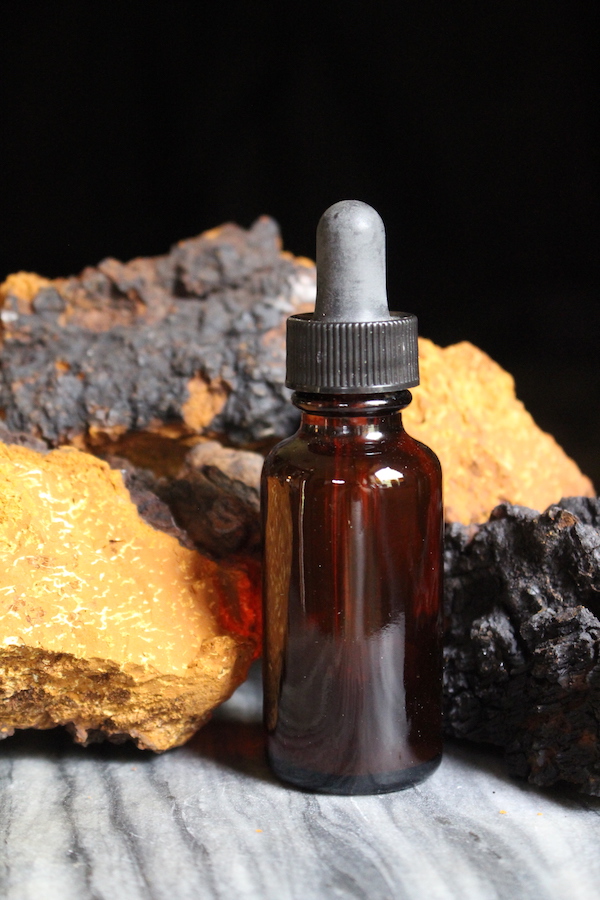
How to Make Chaga Tincture
When I’m making a medicinal mushroom tincture I always do a double-extraction (you can also see me doing this in my tutorial for making a reishi mushroom tincture), this is because mushrooms contain triterpenes, which are alcohol-soluble compounds, in addition to polysaccharides, which are water-soluble. By soaking the chaga in alcohol for several weeks, and then simmering the fungus in hot water, you’ll be left with an extra-potent tincture for all your (mostly hands-off) effort.
To make chaga tincture you’ll need the following ingredients:
- Chaga mushrooms (either purchased dried and ground or foraged and dried)
- 80 proof alcohol (I like to use Smirnoff vodka, it’s palatable and reasonably priced)
- Fresh spring or chlorine-free water
You’ll only need a few basic pieces of equipment to make a chaga tincture:
- Mason jar with lid* (depending on your needs, you can use a pint, quart, or half-gallon jar)
- Metal file or mortar and pestle
- Cooking pot
- Funnel and mesh strainer or cheesecloth
- Tincture bottles for storage
*I like to use an amber glass jar for making tinctures, it shields the contents of the container from light, which in turn keeps the tincture as potent as possible. If all you have are regular glass mason jars, it’s no problem, just try to be as diligent as possible about keeping the jar in a dark place.
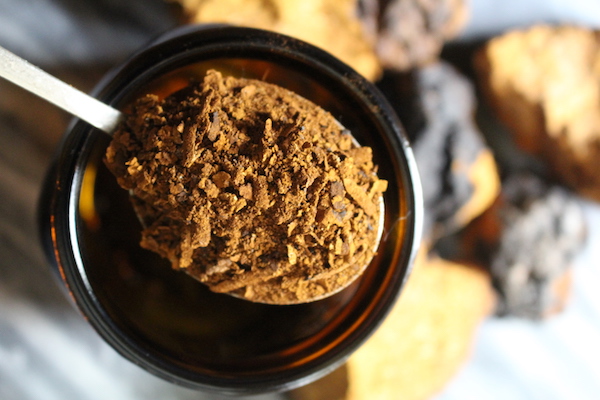
The best way to maximize the medicinal benefits of chaga is to use dried and ground-up mushrooms, this ensures that as much chaga surface area is as exposed to the alcohol, and eventually water, as possible. I like to purchase powdered chaga, but if you’re using freshly foraged chaga, make sure it’s been dried first (to dry chaga, break it into small pieces and store it in a cool dry location for about a month). My favorite way to get a nice powdery texture is to gently rub the chaga with a metal file or rasp, but you can also use a mortar and pestle to achieve the same effect if that’s handy.
When you’re ready to start the tincture, begin by filling a clean mason jar about halfway full with the powdered chaga. Don’t overfill, as it’s important to give the fungus room to expand as it sits in the alcohol.
Next, cover the mushroom powder with whatever alcohol you’ve chosen, filling the jar to within an inch of the top rim. Let it sit for 4 to 6 weeks in a dark cool location away from light (a darkened pantry shelf makes a perfect spot). If you can remember, give the jar a gentle shake every day, this will maximize the extraction of medicinal compounds from the mushroom.
When the alcohol extraction is finished, carefully strain the contents of the jar through a fine-mesh strainer into a large measuring cup and make note of the liquid volume measurement. You can also just strain the alcohol into another jar, but using a measuring cup means one less dish I have to use. Set the measured alcohol aside.
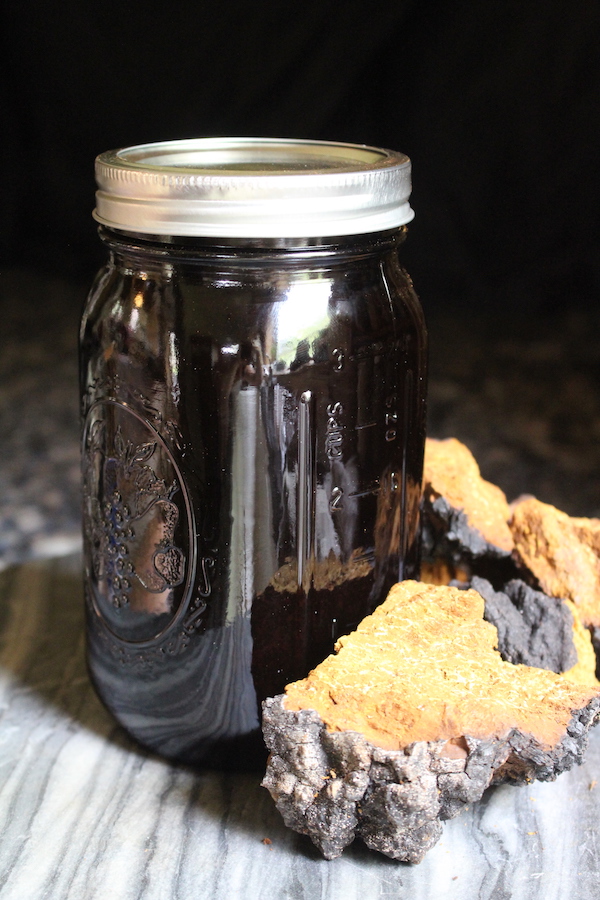
Take the strained chaga powder and place it into a large pot, adding about a half-gallon of water for every 2 cups of powdered mushrooms. Simmer the mushroom and water mixture on low heat for 2 hours, making sure the water doesn’t boil down (I start checking frequently about an hour into the simmering process).
Whatever the liquid measurement was for the alcohol you strained earlier, the volume of the water extract should end up being 1/3 of the alcohol (so, for example, if you measured 24 ounces/3 cups of alcohol you’ll want to end up with 8 ounces/1 cup of water extract).
The ratio of 3 parts alcohol extract to 1 part water extract is important, as it means the tincture is now shelf-stable. Wait until the water extract has cooled completely before mixing with the alcohol extract and store in an amber glass tincture bottle.
Store the tincture in a cool dark place, away from any sources of light.
Ways to Use Chaga
Looking for more ways to use chaga mushrooms?
- How to Make Chaga Tea at Home from Chef Markus Mueller at Earth, Food, and Fire
- Chaga Skin Food (a soothing skin balm) from Real Mushrooms
- Healing Mushroom Coffee from Alpha Foodie
- DIY Chaga Self Tanner from Roxie Jane Hunt
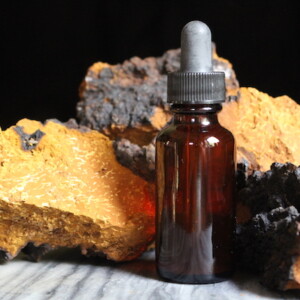
Chaga Tincture
Equipment
- Mortar and pestle
- Medium-sized cooking pot
- Large measuring cup
Ingredients
- Powdered chaga mushroom*
- Vodka or other high-proof alcohol
Instructions
- Fill a clean glass Mason jar halfway full with powdered chaga.
- Cover the contents of the jar with alcohol, filling almost to the very top (leave about an inch of space at the top).
- Screw the jar lid on tight and give the contents of the jar a gentle shake.
- Store the jar in a cool dry area away from all light and heat, gently agitating the contents of the jar by shaking it every day for 4 to 6 weeks.
- When the tincture is ready to be decanted, use a funnel to strain the mushroom powder through a fine-mesh strainer or cheesecloth, reserving the alcohol in a large measuring cup (or, at least, make a note of the volume and write it down.)
- Transfer the strained chaga to a medium-sized pot and add water — using a half-gallon of water for every 2 cups of powdered chaga.
- Bring the water and chaga to a simmer and keep over the heat for 2 hours, checking frequently that the water isn't boiling down. The volume of water should roughly 1/3 of the measured alcohol volume.
- Remove the water and chaga mixture from the heat, allow to cool.
- Mix the alcohol extract and cooled water extract together. Decant the mixture into tincture bottles and store away from heat and sunlight.
Notes
Medicinal Mushroom Tinctures
The beneficial properties of medicinal mushrooms are often best preserved in tinctures, where both the alcohol and water-soluble portions are extracted at the same time.
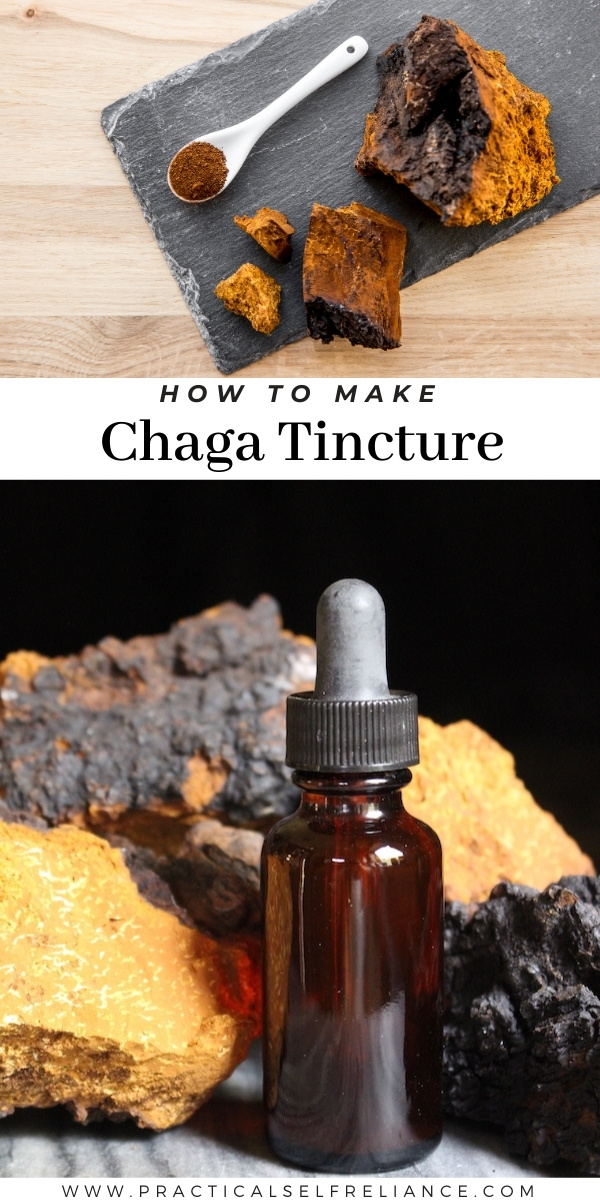

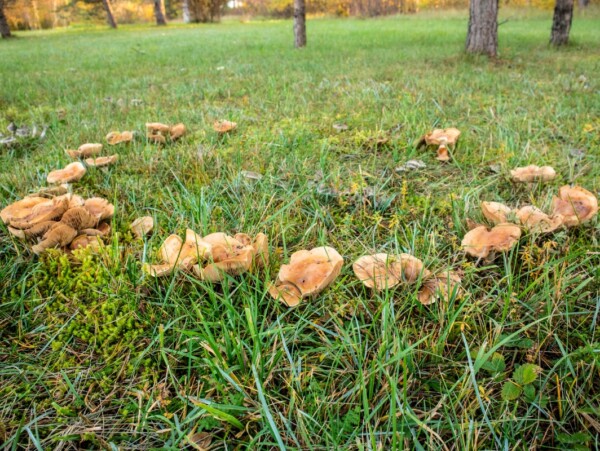
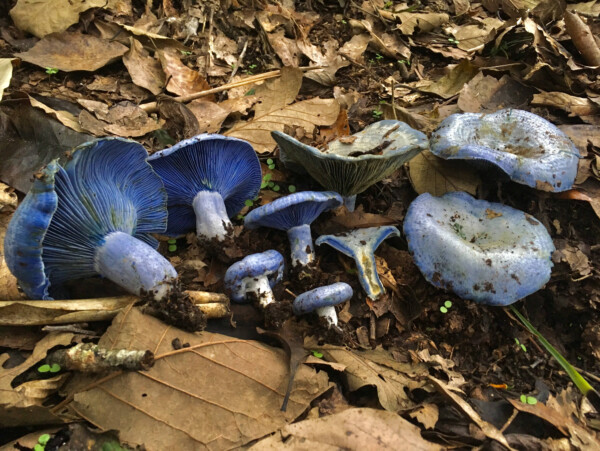
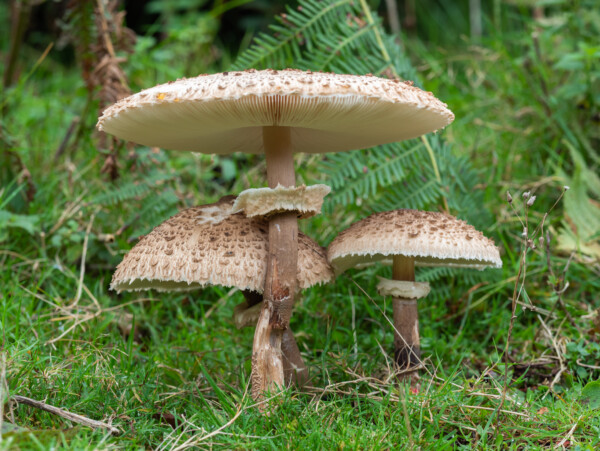
I have a question about this double extraction method. Once the water/chaga has simmered for the stated 2 hours, does the chaga powder dissolve fully or would it need to be strained again before adding to the alcohol extract?
You should strain the water extraction before adding it to the alcohol extraction.